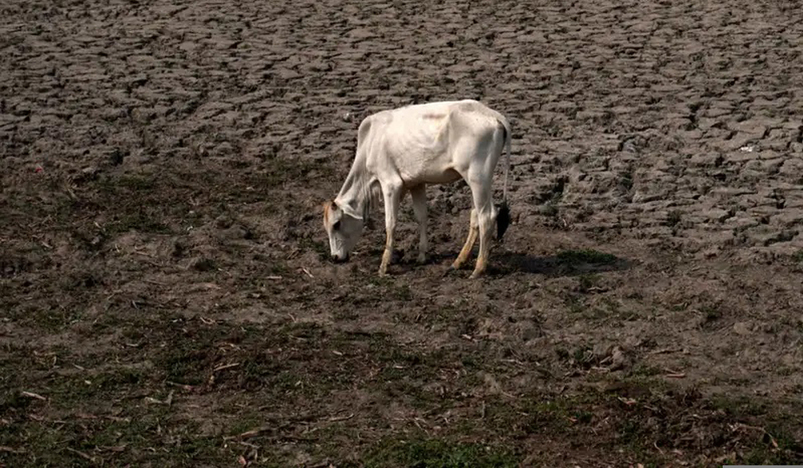
A cow grazing in a dried-up pond in India during a heatwave in 2022
The majority of days every year could become dangerously hot in many parts of the world if warming reaches 3°C by 2100
With 3°C of global warming by the end of the century, more than 5 billion people could be exposed to dangerous heat and humidity for most days each year.
Temperatures are considered dangerously hot and humid for humans when the heat index – a measure of relative humidity and air temperature – exceeds 39°C (102°F). Days this warm can lead to heat cramps and exhaustion, while those with a heat index above 51°C (124°F) can cause heat stroke and death and are considered extremely dangerous.
Lucas Zeppetello at Harvard University and his colleagues modelled a range of greenhouse gas emissions scenarios based on global population and economic growth by the end of the century. They found that global average temperature would rise between 2.1°C and 4.3°C by 2100.
They then looked at how this global warming would change heat and humidity at a local scale. The researchers assumed future daily weather would resemble historical patterns. “We expect our Junes to be the same flavour of Junes as we’ve been seeing for the past 20, 30 years. Just a little bit hotter. And drier and more humid in some places,” says Zeppetello.
They found that in the most likely warming scenario of 3°C by 2100, tropical and subtropical regions would experience dangerously hot days for a quarter to half of each year by 2050, and for most of each year by the end of the century. Under this scenario, 5.3 billion people in India, sub-Saharan Africa, and the Arabian peninsula would be exposed to extremely dangerous heat – with the heat index breaching 51°C (124°F) – on 15 or more days each year by 2100.
Places much further from the equator could see between 15 and 90 days of dangerous heat each year. A detailed look at Chicago – where a rare 1995 heatwave killed around 500 people – showed such heat could become an annual event there.
Cascade Tuholske at Montana State University, who was not involved in the work, calls the findings “alarming” and says stopping emissions is the best way to avoid the impacts of extreme heat. Other needed adaptations include reliable air conditioning and better education about the dangers of heat, he says.
“We need people to understand: heat kills,” says Kristie Ebi at the University of Washington in Seattle. “And it doesn’t need to.”
SOURCE: NewScientist
.jpg)
Qatar Secures Place Among the World's Top 10 Wealthiest Nations
.jpg)
Hamad International Airport Witnesses Record Increase in Passenger Traffic

Saudi Arabia: Any visa holder can now perform Umrah

What are Qatar's Labour Laws on Annual Leave?
Leave a comment